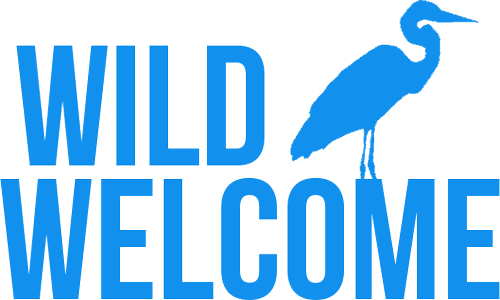Discovering an injured or oiled seabird can be concerning. If the animal can fly well it will not be able to be brought into care. If it can fly for only a short period, a trained rescuer may be needed to help.
Step 1: Assess the Situation
- Observe from a Distance: Before approaching, watch the animal quietly. Some birds many simply be resting. However, if the bird is pelagic (meaning it spends most of its life in the water) being on the beach is a sign of distress. Pelagic birds include: loons, grebes, ocean ducks, and murres are examples of pelagic bird species.
- Check for Injuries: Signs that the animal needs help include visible wounds, bleeding, broken limbs, or signs of illness such as lethargy or vomiting. If the animal shows any of these signs, contact your local wildlife rehabilitation center immediately. If seabirds look wet or do not have feathers that look normal, that may also be a sign the animals has lost its waterproofing and needs urgent care.
ATTENTION: Seabirds can have Highly Pathogenic Avian Influenza. Signs of illness include: head bobbing, balance problems, walking in circles, seizures, and trouble breathing (respiratory issues). These animals should not be touched and should be reported for assistance from a trained professional.
Step 2: Identify the Species and Age
- Pelagic or non-pelagic: some seabird species spend time on land (non-pelagic) and those that do not (pelagic). Knowing the difference can help determine whether animals need assistance.
Step 3: When to Intervene
- Oiled Animals: Any oil on a bird requires immediate assistance. The bird can no longer regulate its body temperature.
- Entanglement: If a bird has been hooked, or is wrapped in line or other debris it needs care. If you see a bird with hooks and line, do not attempt to pull out the hooks yourself to prevent further damage. A trained wildlife professional can help.
- Broken Limbs: Wing injuries will prevent as a drooping wing, or a wing dragging on the ground, or not having symmetrical wings. A bird may have a broken leg if it is limping or having trouble walking or standing up
- Lethargy: Animals that are beached and lethargic may be suffering from starvation. If the animal has neurological symptoms, or other symptoms of Avian Flu, do not touch the animal. Always call a treained professional for lethaarigc animals.
- Birds that do not fly away: Generally speaking, if you can walk right up to a seabird and it does not fly away you should call a trained wildlife professional.
- Juvenile animals: Some young birds, like Black crowned night herons and great egrets appear to be abandoned when they fledge from the nest. If you see a juvenile bird, send a photo or video to a local rehabilitator to see if they are exhibiting natural behavior or they need help.
Step 4: How to Help Safely
- Prepare a Container: Use a box lined with soft, unscented cloth. Ensure the container has ventilation holes.
- Minimize Handling: Excessive contact can cause stress and harm the animal.Some animals, like cormorants, have very sharp beaks. All wild animals can cause injury, even if they are wounded. You can put a towel over the animal, and carry the animal below your waist if it safe to capture.
- Keep the Animal Warm and Quiet: Place the container in a warm, dark, quiet area away from pets and children.
- Do Not Feed or Provide Water: Improper feeding can harm the animal. Leave this to professionals.
- Seek Professional Assistance: Contact your local wildlife rehabilitation center for guidance on the next steps.
Extra Tips
- Keep Pets on a leash: Dogs on the beach can disrupt the rest and foraging activity of seabirds
- Leave Natural Areas Undisturbed: some shorebirds nest in the sand above the tide line, observe posted signs protecting habitat
- Observe Quietly: If you're unsure whether a juvenile bird is truly orphaned, watch from a hidden spot for at least an hour to see if the parents return.
- Secure your food: If you are having a beach picnic, bring food in hard-sided containers that are difficult to open for hungry seabirds looking for an easy snack!
By understanding and respecting the natural behaviors of wildlife, you can make informed decisions that support the well-being of these animals and ensure their successful return to the wild.


